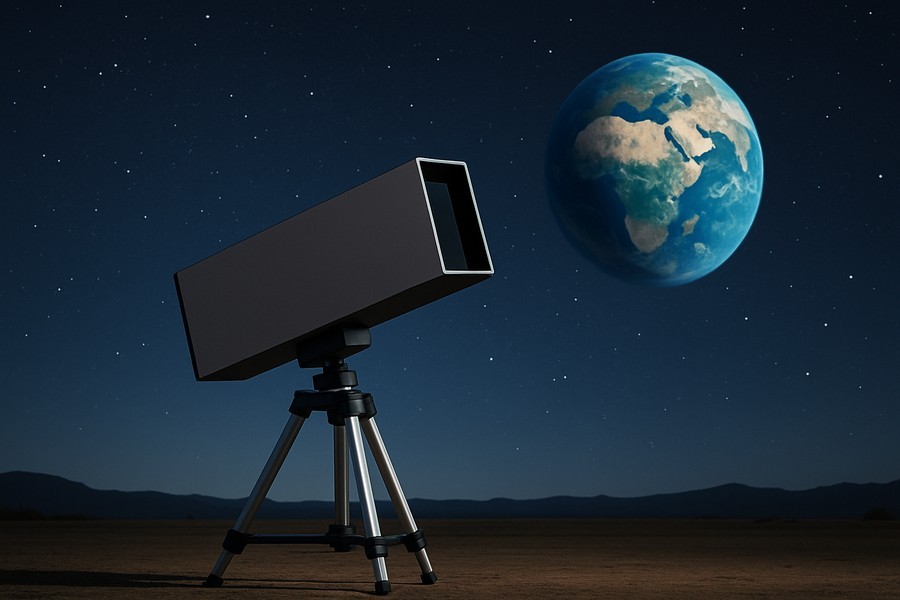
Discovery of 'Second Earth' Might Be Easier With Innovative Telescope Design
Life as we know it hinges on the presence of liquid water, which serves as a facilitator for chemical reactions. Single-celled life forms have been around almost as long as our planet, with multicellular life taking about three billion years to emerge. Human existence, in comparison, represents less than one ten-thousandth of Earth’s age.
This fact suggests that planets with liquid water could potentially host life. However, finding life that not only exists but also explores and seeks to travel the universe may be a rarity. And if we want to find extraterrestrial life, we might need to venture out and find it ourselves.
The Limitations of Space Travel
The vast expanse of space and the speed of light constraints on travel and communication impose practical limits on our reach. Only the stars in closest proximity to our sun could be feasibly reached within a human lifespan, even by a space probe. Furthermore, only stars that share similar size and temperature characteristics with our sun have the potential to support multicellular life, given their longevity and atmospheric stability.
Therefore, the most fruitful stars to examine are the roughly 60 sun-like stars located within approximately 30 light-years from us. The most promising planets orbiting these stars would share Earth's size and temperature, providing conditions for solid ground and liquid water.
The Challenge of Observing Exoplanets
Observing an Earth-like exoplanet separate from its parent star poses a significant challenge. In the most favorable circumstances, the star outshines the planet by a factor of a million. If the star and planet appear blurred together, the chances of detecting the planet are nil.
The resolution achievable in telescope imagery is determined by the telescope's size and the wavelength of the light being observed. Planets with liquid water emit the most light at wavelengths around 10 microns, which is about the width of a thin human hair and 20 times the typical wavelength of visible light. To discern Earth from the sun from a distance of 30 light-years, a telescope needs to collect light over a minimum distance of 20 meters. Furthermore, the telescope must be deployed in space, as Earth's atmosphere would distort the image excessively.
Alternative Approaches to Telescope Design
Deploying a 20-meter space telescope may seem beyond the reach of current technology. Consequently, scientists have pondered several alternative methods. One approach involves launching multiple smaller telescopes that maintain precise distances between them, collectively acting as a single large-diameter telescope. However, maintaining the necessary spacecraft positional accuracy is currently unachievable.
Other proposals suggest using shorter wavelength light, allowing for a smaller telescope. However, a sun-like star outshines Earth by more than 10 billion times in visible light. It's currently impossible to block enough starlight to visualize the planet, even if the image theoretically has adequate resolution.
A Novel Perspective: The Rectangular Telescope
In a recent publication in an astronomy and space sciences journal, astrophysicists propose a more achievable alternative. They suggest it could be possible to detect nearby, Earth-like planets orbiting sun-like stars using a telescope of similar size to existing models, with a mirror that's a one by 20-meter rectangle rather than a circular 6.5-meter diameter mirror.
With a mirror of this shape and size, they can differentiate a star from an exoplanet in the direction that the telescope mirror is 20 meters long. For exoplanets at any position around a star, the mirror can be rotated so its longer axis aligns with the star and planet. This design could potentially detect half of all existing Earth-like planets orbiting sun-like stars within a 30 light-year radius in less than three years.
With no need for significant technological advancements, this design could be a practical pathway towards identifying our twin planet, or 'Earth 2.0'. If there's about one Earth-like planet orbiting the average sun-like star, then we could find approximately 30 promising planets. Further investigations of these planets could reveal atmospheres hinting at the presence of life, such as oxygen produced through photosynthesis.
For the most promising candidate, we could send a probe to capture images of the planet's surface. Thus, the rectangular telescope could pave the way for us to identify our potential cosmic neighbor.
